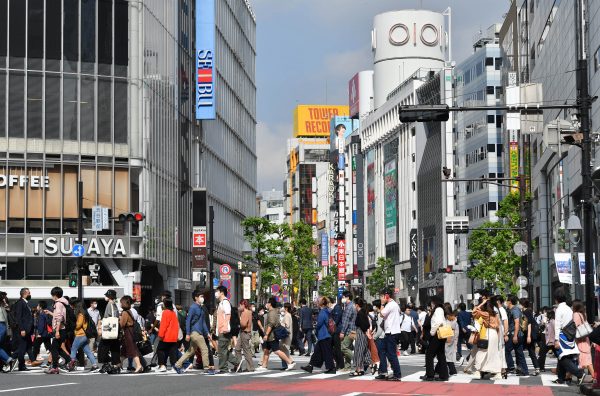Only one major country has said ‘no thank you’ to these benefits: Japan. In 2019, the United Nations Conference on Trade and Development ranked 196 countries’ stock of inward FDI as a share of GDP. Japan came in dead last — just behind North Korea.
How is this possible when, almost 20 years ago, Tokyo incorporated inward FDI into its growth strategy? In 2001, FDI was a miniscule 1.2 per cent of GDP, compared to 28 per cent in a typical rich country. Then prime minister Junichiro Koizumi set a goal of 5 per cent by 2011 and changed Japan’s Commercial Code to remove some impediments. That made sense. Japanese economists have shown that even the small amount of FDI in Japan has helped.
By 2008, FDI had risen to 4 per cent. Then momentum stalled. As of 2019, the ratio was only a smidgeon higher, at 4.4 per cent, versus 44 per cent in other rich countries. If Japan performed like others with similar characteristics, the ratio would have reached an estimated 35 per cent of GDP by 2015.
To make matters worse, Tokyo is hiding how badly it has failed from itself. The Ministry of Finance reported that inward FDI climbed to US$359 billion in 2020, thereby achieving Shinzo Abe’s goal of doubling the level from 2013. According to the OECD, in reality, the 2020 figure stood at US$215 billion. The problem is that Tokyo uses a misleading set of figures. The IMF recommends the ‘directional principle’ for measuring growth in a country’s FDI. The Ministry instead highlights a different set, the ‘asset/liability principle’. The latter includes items having nothing to do with real FDI, such as loans from overseas affiliates back to their parents in Japan. On this measure, much foreign investment in Japan comes from Japanese companies based overseas.
Multinational companies regularly list Japan as a top target for investment. But foreign businesses face trouble buying Japanese companies. In a typical rich country, 80 per cent of inward FDI takes the form of foreign firms buying domestic firms, known as mergers and acquisitions (M&A). In Japan, it’s only 14 per cent.
While Koizumi reduced lingering regulatory impediments to M&A, Japan’s business setup poses the biggest obstacle. The most attractive companies are tied up in Japan’s corporate groups, known as keiretsu. These keiretsu, which include 26,000 parent companies and their 56,000 affiliates, employ 18 million people, a third of all employees in Japan. Traditionally, keiretsu members were never sold even to members of another keiretsu. While Japan’s economic travails have reduced resistance to inter-keiretsu M&A, most keiretsu remain strongly opposed to foreign purchasers. From 1996 to 2000, only a trifling 57 keiretsu members sold themselves to a foreign company, whereas 3,000 unaffiliated companies did so.
There are some potential drivers of a positive change. The most powerful is a huge succession crisis at Japan’s small and medium enterprises. Some 600,000 profitable enterprises may have to close by 2025 because their septuagenarian owners lack successors. Six million jobs are at risk. How many of these owners, who genuinely care about their employees’ job security, would rather shut their firm than refuse to sell to a foreigner, particularly if the government made the introduction? A 2020 draft paper issued by the Japanese FDI Promotion Council, an advisory body to the government, advocated soliciting foreign buyers. But the final document released by the Cabinet Office in June 2021 purged all mention of inward M&A.
Another potential driver is the push for reform of corporate governance to get firms to focus on profitability, not just sales and market share. This may seem unrelated to FDI, but the logic, as seen by foreign firms, is that to maximise profitability, corporate giants will have to focus on core competencies and sell even profitable non-core divisions and affiliates that don’t fortify the parent’s strategic position. That would not only boost national growth, but also increase the number of firms in the market for purchase.
While this logic may eventually bear fruit, it has yet to do so. The holdup, commented Bain & Co, a private equity firm, in a 2018 report, is that ‘boards and shareholders do not yet push for strategic divestitures’. Instead, they are taking easier routes to show a picture of higher ‘return on equity’, such as stock buybacks and selling unprofitable units.
These drivers can lay the groundwork, but unless policymakers promote inbound M&A, Japan will remain in the cellar of the FDI rankings and overall economic growth will remain as listless as it is today.
Richard Katz is a Senior Fellow at the Carnegie Council for Ethics in International Affairs. This is digested from Foreign Affairs.

